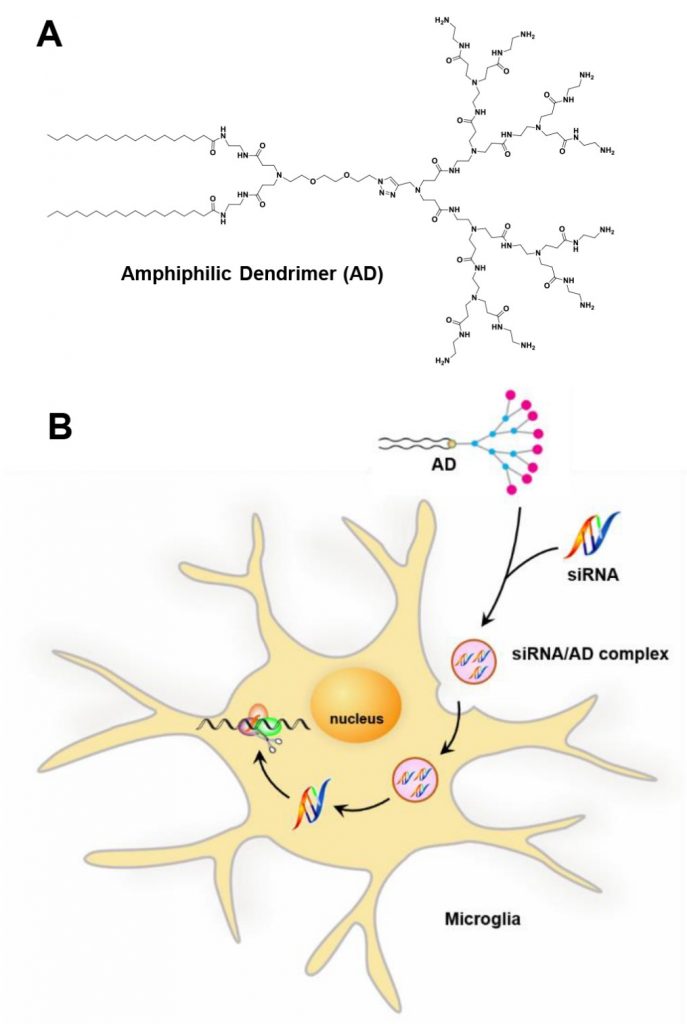Efficient and Innocuous Delivery of siRNA to Microglia using an Amphiphilic Dendrimer Nanovector
Microglia are the resident macrophages of the central nervous system (CNS), and acute or chronic alterations in microglia are associated with numerous brain diseases. Genetic manipulation of microglial functions in diseases using small interfering RNA (siRNA) is currently hampered by the lack of efficient and harmless delivery methods. Here, we report a cationic amphiphilic dendrimer nanovector (Figure 1) which is able to protect siRNA from degradation, promote cellular uptake and endosomal escape of siRNA, generating effective gene silencing within the primary microglia cultures without affecting basal microglial properties. This is the first report for functional siRNA delivery in primary microglia, which may open up new perspectives on functional genomic studies and therapeutic targeting of microglia in brain diseases.
Figure: (A) Chemical structure of the amphiphilic PAMAM dendrimer AD. (B) Schematic presentation of siRNA/AD complex formation and AD-mediated siRNA delivery in primary microglia.

This is a collaborative work among Centre Interdisciplinaire de Nanoscience de Marseille (CINaM) in France, Neurobiology Center in Nencki Institute in Poland and Trieste University in Italy under the frame of the ERA-NET EuroNanoMed project «NANOGLIO» and the COST Action CA17140 “Cancer Nanomedicine: frem bench to bed”.
Publication:
“Efficient and Innocuous Delivery of siRNA to Microglia using an Amphiphilic Dendrimer Nanovector”
Aleksandra Ellert-Miklaszewska*, Natalia Ochocka, Marta Maleszewska, Ling Ding, Erik Laurini, Yifan Jiang, Adria-Jaume Roura, Suzanne Giorgio, Bartlomiej Gielniewski, Sabrina Pricl, Ling Peng*, Bozena Kaminska
Nanomedicine, 2019, Doi: 10.2217/nnm- 2019-0176
Contact:
Dr. Ling Peng
Aix-Marseille Université, CNRS, Centre Interdisciplinaire de Nanoscience de Marseille (CINaM) UMR 7325, Equipe Labellisé par La Ligue, Marseille, France
Email: ling.peng@univ-amu.fr
